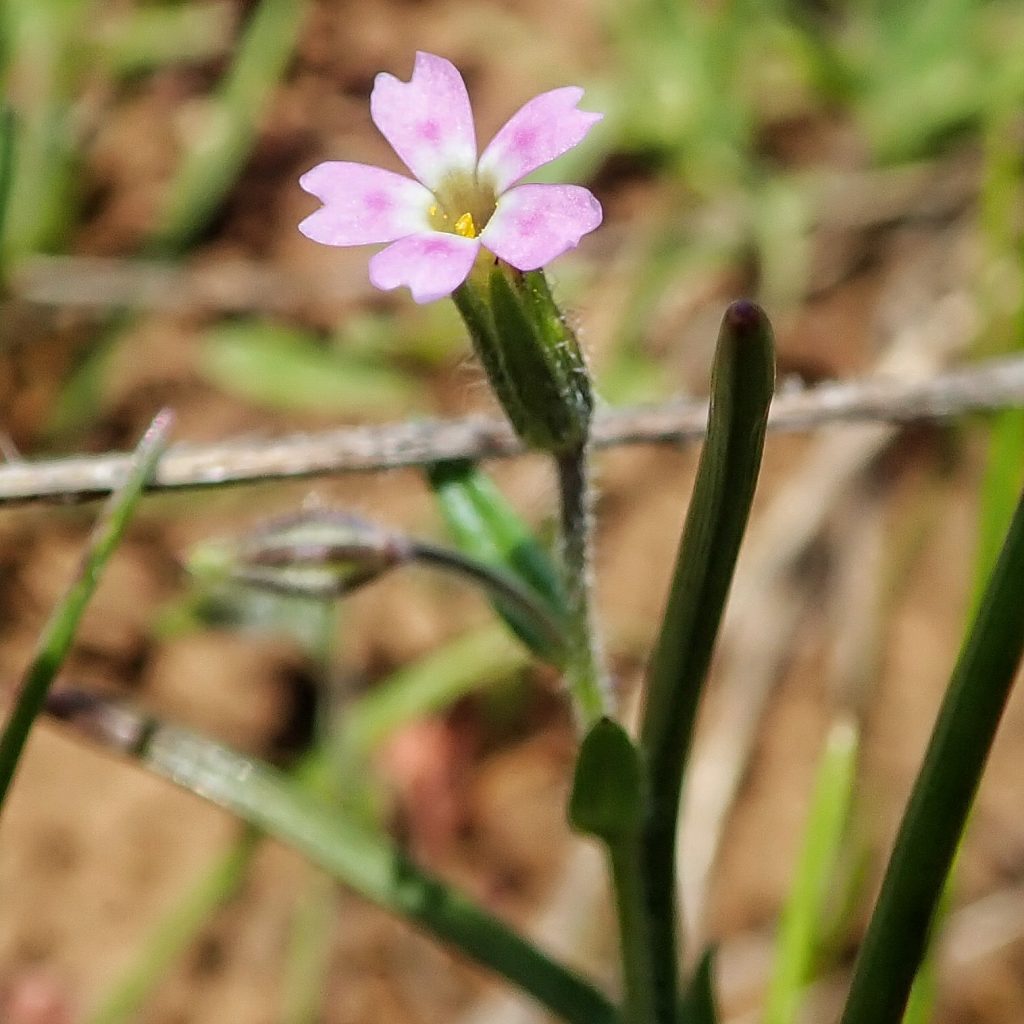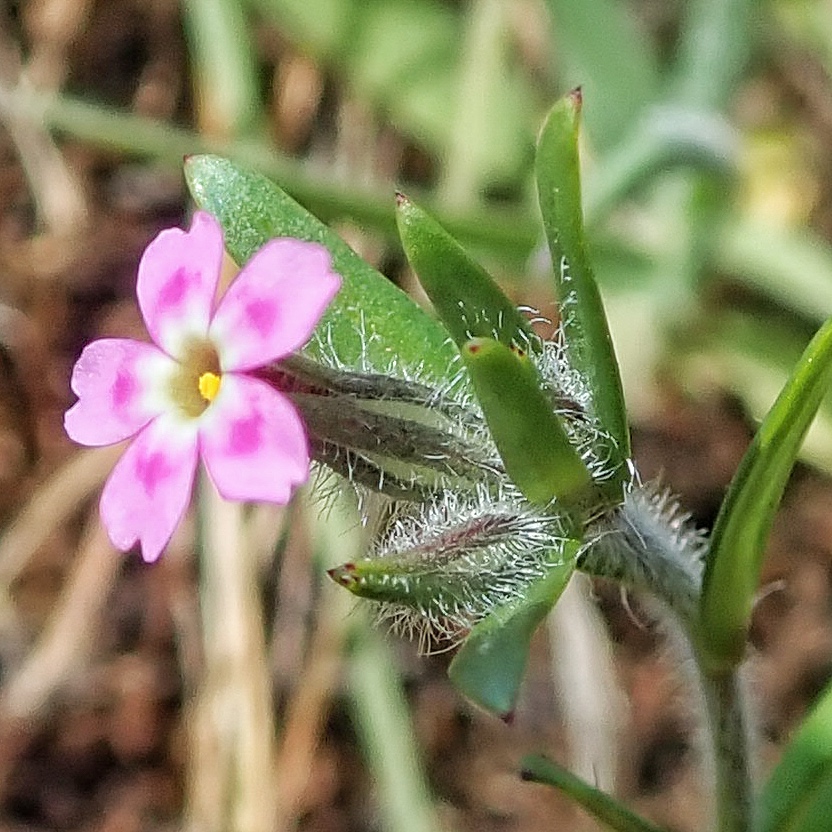
This is another little flower that I have seen many times before and never took the time to identify. It goes by the common names of slender phlox, and midget phlox. It is easy to overlook this plant as more things crowd around it, but early in the season it’s pretty little flowers are more noticeable, although you pretty much have to get on hands and knees to see them well.
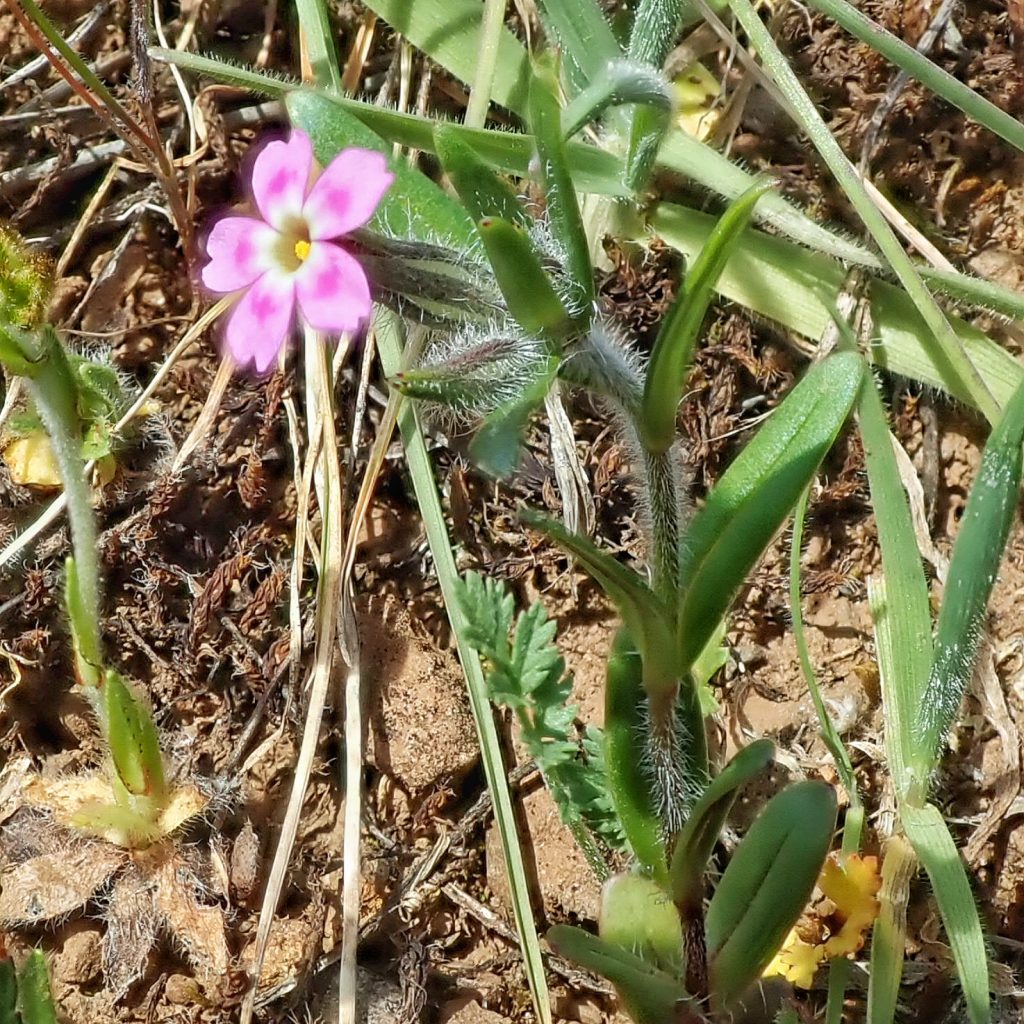
Microsteris gracilis was formerly classified with the Phlox, but now it is in its own, monotypic genus in Polemoniaceae. This is somewhat controversial, and it is not accepted by all botanists. Molecular studies are ongoing. But for our purposes of enjoyment that is a moot point. It is still a welcome sight against the often bare, grey-brown soil of March!
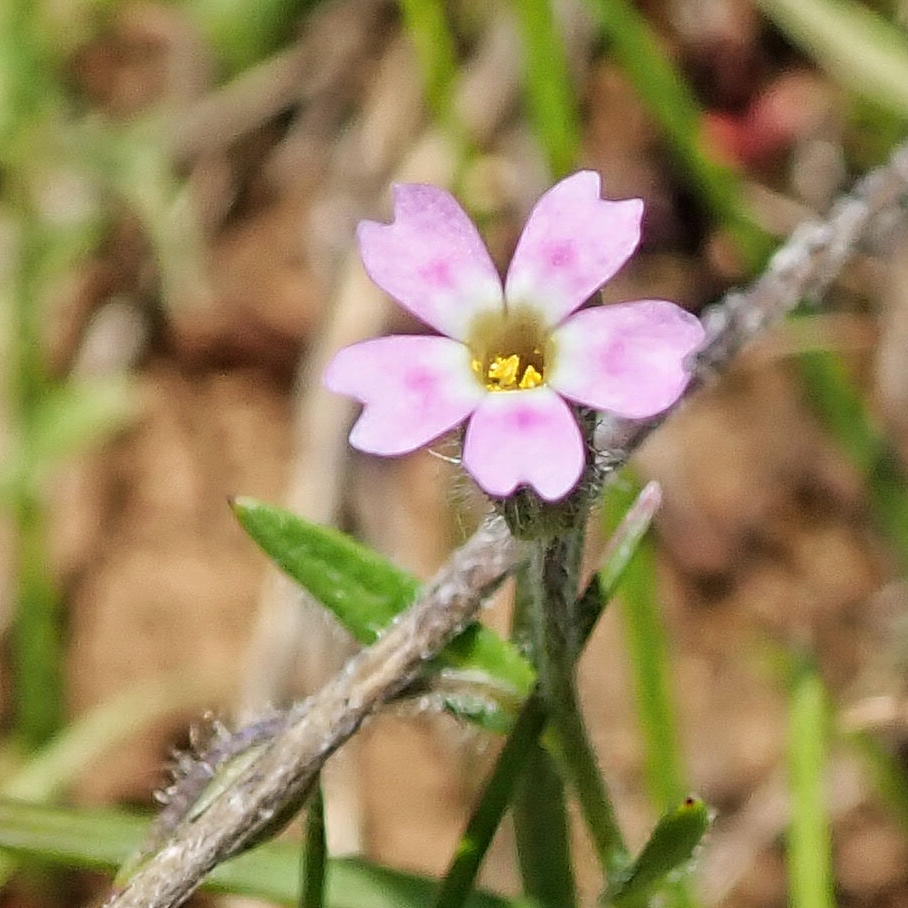
Description– Annual; extremely variable in growth habit, from spreading, multi-branched mounds to single erect stalks; seldom as much as 16” tall; stems and branches hairy; leaves lance shaped (although in damp environments they can be rather ovate), hairy, 10-30mm long, arranged opposite each other in the lower 2/3, alternating above; flower is a ±10mm tube with 1-2mm lobes which extend perpendicularly, are often notched, and are usually some combination of white, blue, pink, and purple; interior of the tube is yellowish.
Similar species– The very similar (and formerly congeneric) Phlox spp. have opposite leaves all the way to the stem/branch tips, and are all perennial in our area, meaning they are at least slightly woody at their base.

Habitat– Open, dry to dampish areas.
Range– Native; Region wide in appropriate habitat.
Reproductive timing– Blooms March to June
Etymology of names–Microsteris roughly translates from Greek as ‘small support’ and refers to the small size of the plant. The specific epithet gracilis mean slender in Latin and refers to the narrowness of the plants that were the holotype of this species.
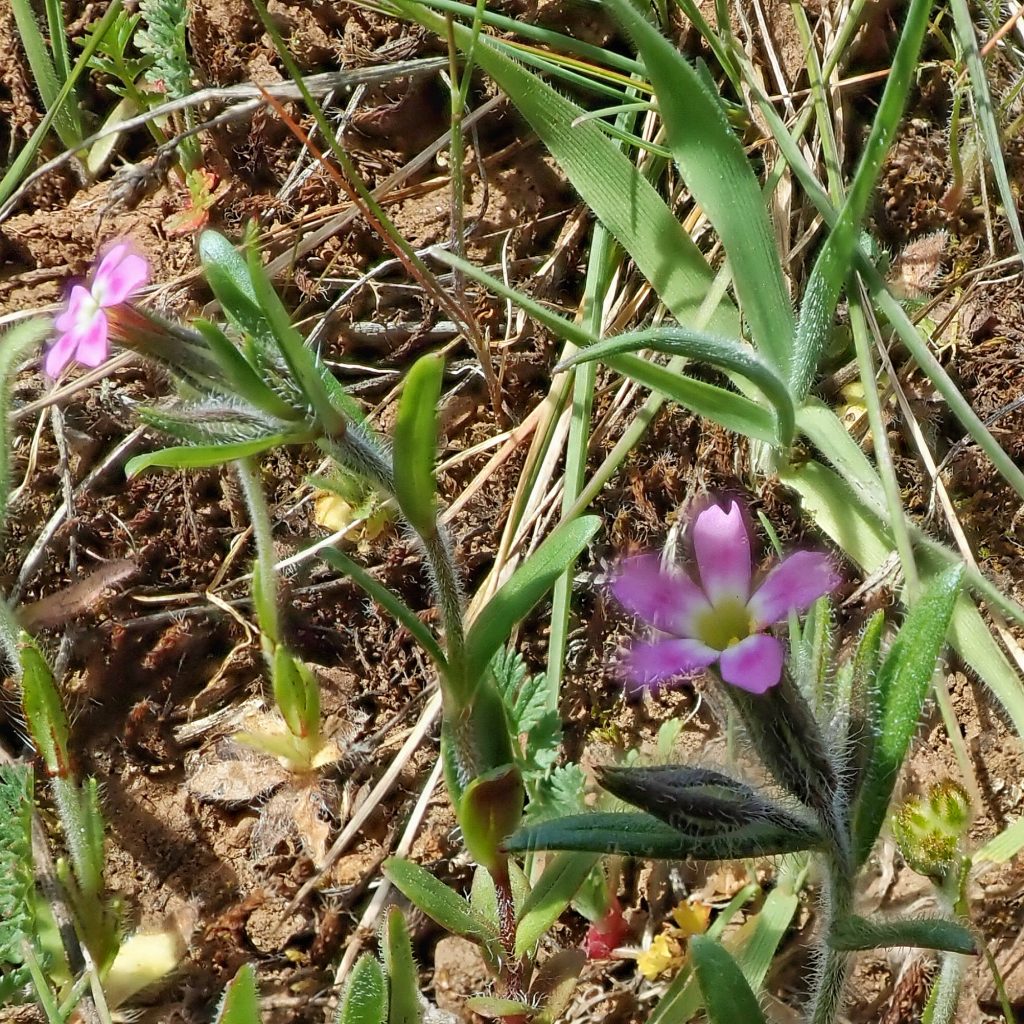
Phlox gracilis | Midget Phlox | Wildflowers of the Pacific Northwest
https://calscape.org/Microsteris-gracilis-()
http://science.halleyhosting.com/nature/basin/5petal/phlox/phlox/mphlox.htm
http://biology.burke.washington.edu/herbarium/imagecollection/taxon.php?Taxon=Microsteris%20gracilis
https://www.swcoloradowildflowers.com/White%20Enlarged%20Photo%20Pages/microsteris%20gracilis.htm
https://en.m.wikipedia.org/wiki/Microsteris
